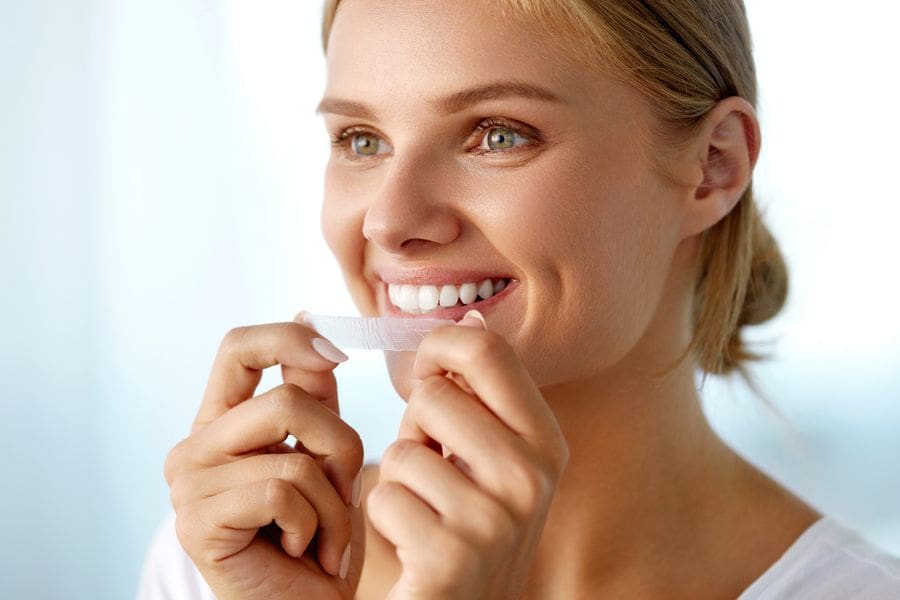Teeth whitening has become a popular beauty trend. But with so many teeth-whitening options, it can be overwhelming to know which method is right for you. From in-office dental procedures to over-the-counter techniques, this article will cover the top teeth-whitening options you need to know about.
Whitening Toothpaste
According to the American Dental Association, tooth discoloration is typically grouped into two types: extrinsic and intrinsic stains. Extrinsic stains result from environmental and behavioral implications like smoking or drinking “staining” beverages like coffee and red wine. Since extrinsic stains can be reduced by changing your behaviors, a simple, effective solution is to use a whitening toothpaste to remove these surface-level stains on your enamel.
Our Pick: Arm & Hammer Advanced White Extreme Whitening Toothpaste ($4.39, shop here)
Whitening Strips
Intrinsic stains (found inside the tooth) are often caused by systemic issues such as genetic disorders, localized factors during tooth development, or a natural result of aging. Decreasing the look of intrinsic stains is trickier because you need a chemical reaction to change the tooth’s color.
Whitening strips are a popular at-home option for both extrinsic and intrinsic stains. Most packages have a series of strips that you place on your teeth daily for at least 30 minutes. To see optimal results, you will need to consistently use teeth-whitening strips according to the brand’s instructions. Whitening strips are generally safe, although tooth sensitivity and gum irritation are potential side effects.
Our Pick: Moon Dissolving Whitening Strips ($34.99, shop here)
Blue-Light Treatments
Newer at-home whitening treatments promise whiter smiles via LED blue-light technology. The kits typically come with whitening gel or strips that you apply to your teeth, along with a battery-powered light. The blue light helps weaken the stains on your teeth so the gel can work better.
Our Pick: Crest 3D Whitestrips with Light ($69.99, shop here)
In-Office Whitening Treatment
You can elect to have a teeth-whitening (bleaching) treatment done by your dentist. This is a popular option among patients for its less-invasive, more effective results. It’s important to note that the bleaching process only works on natural teeth, so tooth-colored restorations like crowns or implants will not change color. And while professional whitening is typically more effective than at-home solutions, it tends to be a much more expensive option (averaging about $650 per visit).
DIY Teeth Whitening
There are a number of do-it-yourself teeth-whitening options that can lead to a whiter, brighter smile, including:
- Oil Pulling: This traditional Indian remedy involves swishing oil (like coconut oil) in your mouth to remove bacteria.
- Baking Soda: Brushing your teeth with baking soda helps reduce bacteria growth. This option won’t make your teeth white overnight, but it can be effective over time.
- Fruits and Vegetables: Eating lots of fruits and vegetables is not only good for your overall health; it’s good for your teeth. Crunchy fruits and vegetables help remove plaque off your teeth as you chew.
- Limiting Foods and Beverages That Stain Your Teeth: One of the most practical DIY teeth-whitening options is to limit foods and beverages that will inevitably stain your teeth. Making the necessary lifestyle changes to prevent teeth discoloration in the first place will naturally give you a step up in your teeth-whitening game!







Really helpful information !!